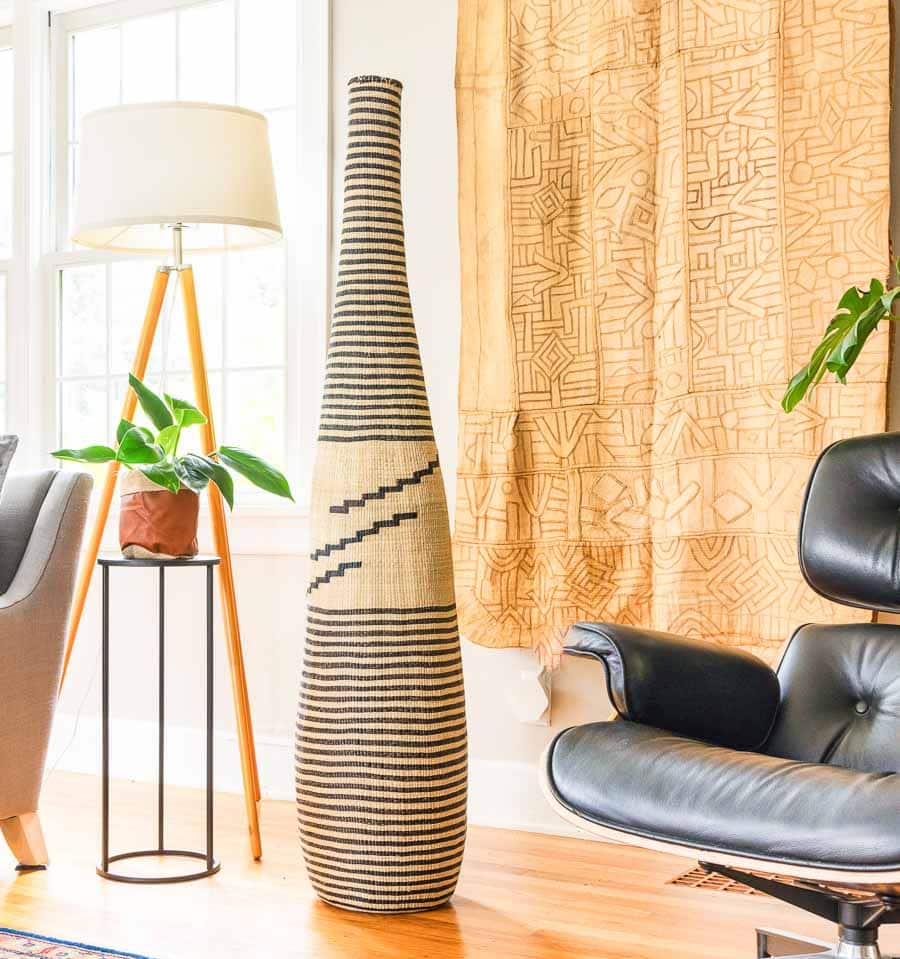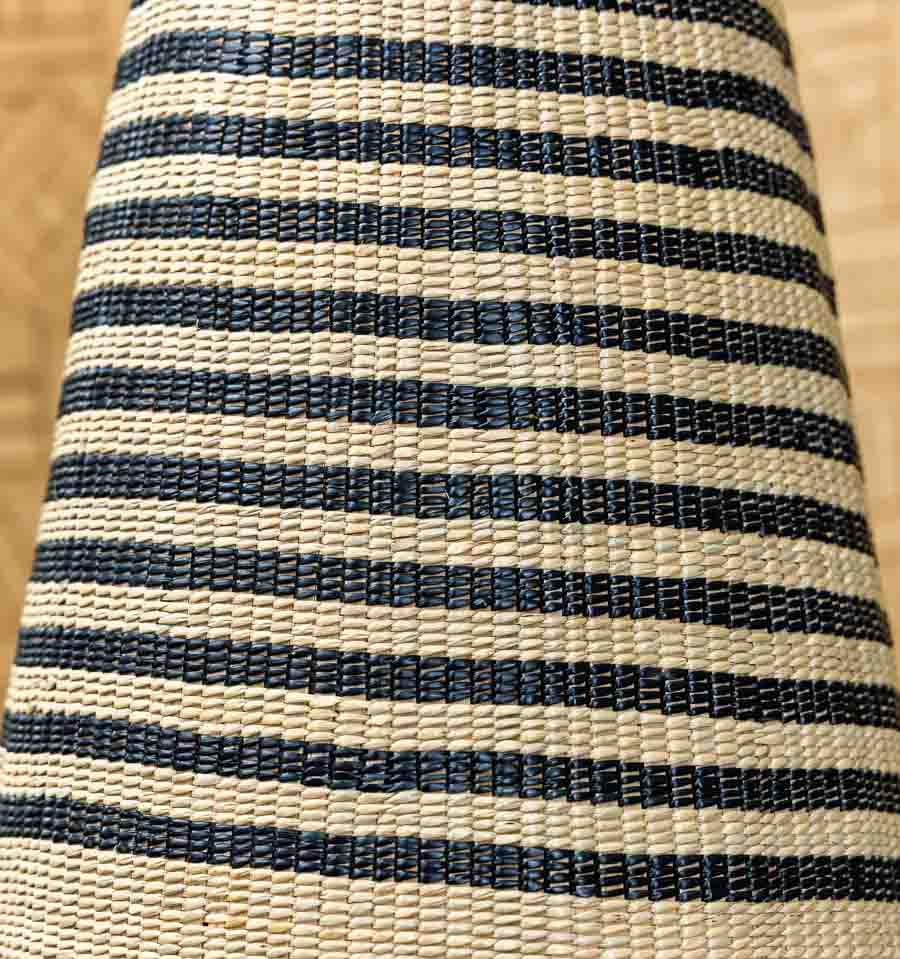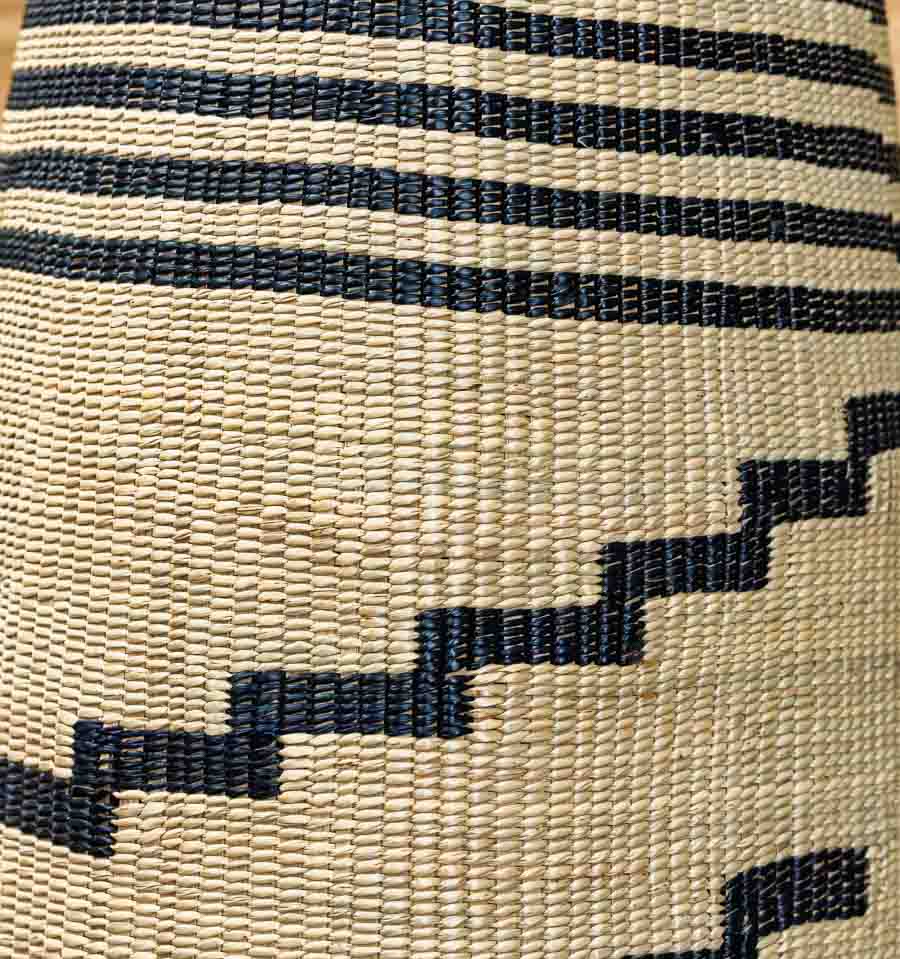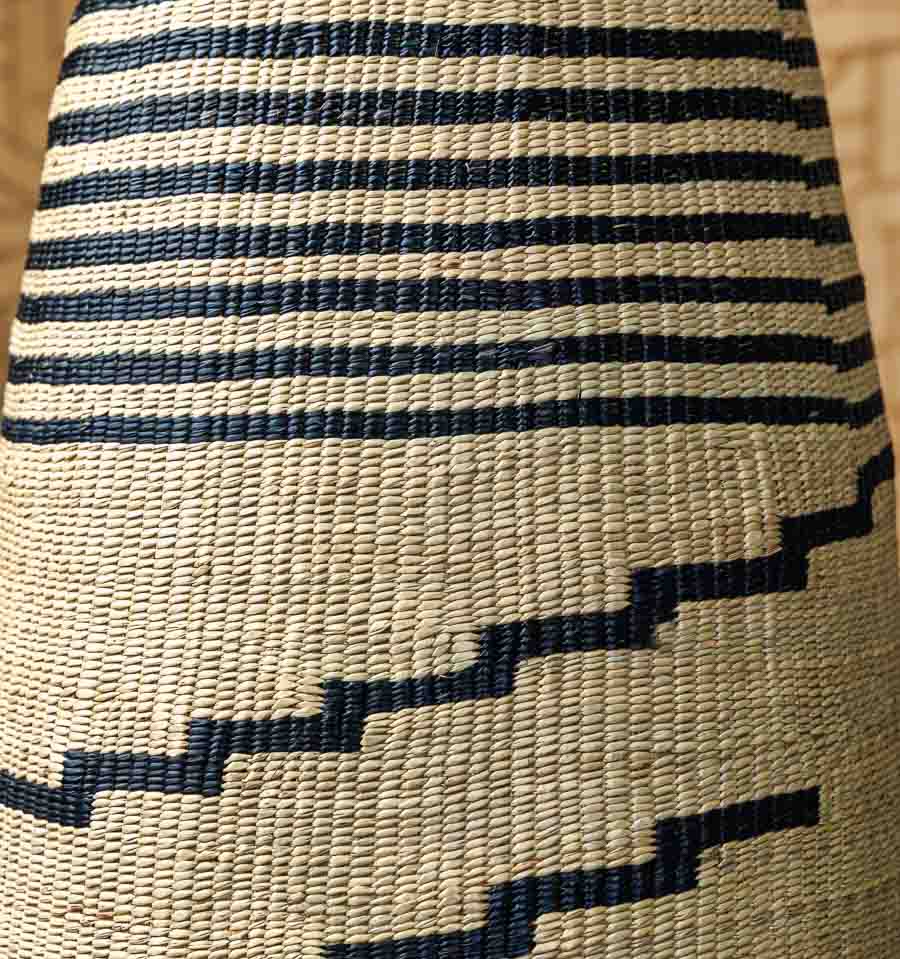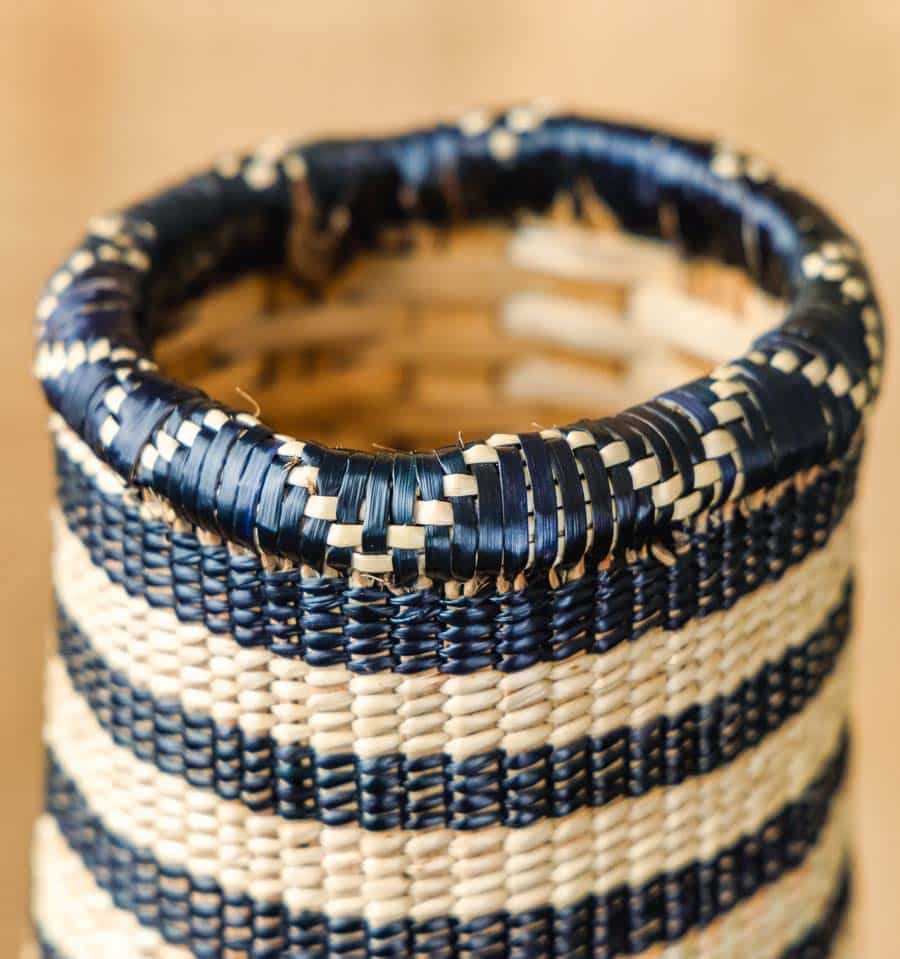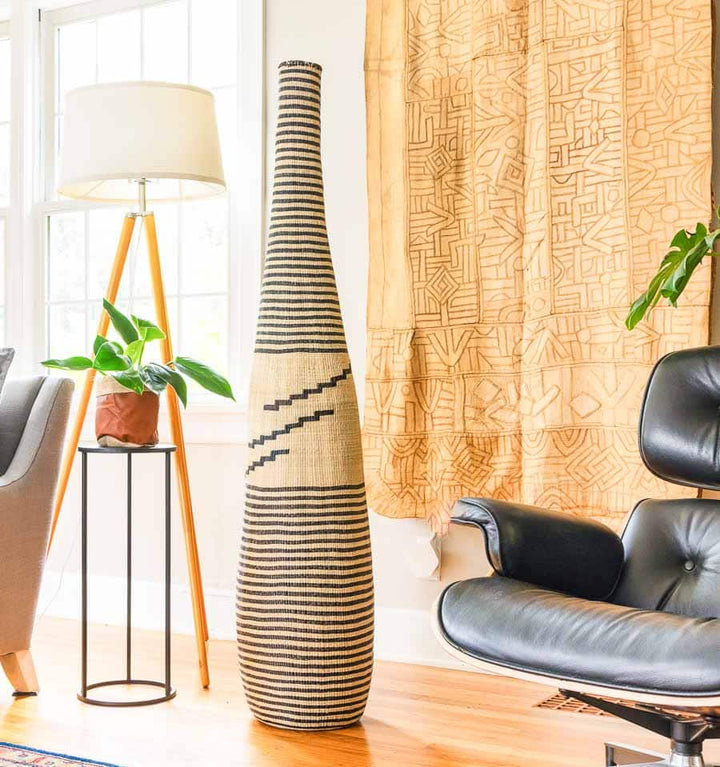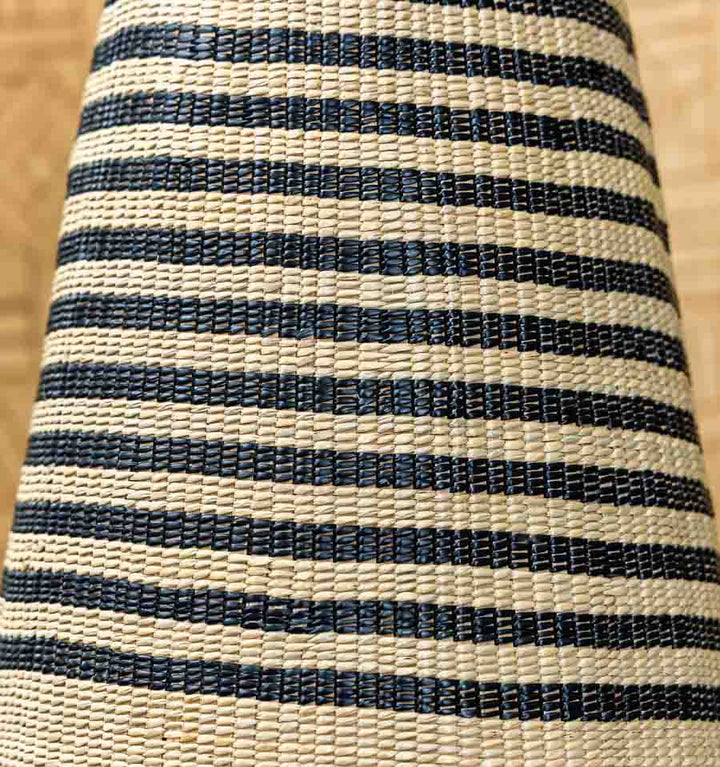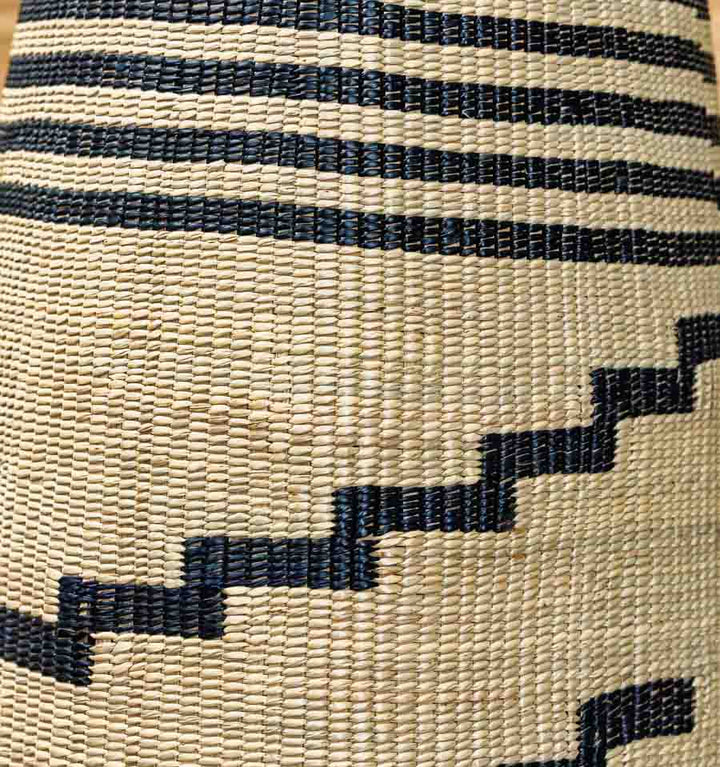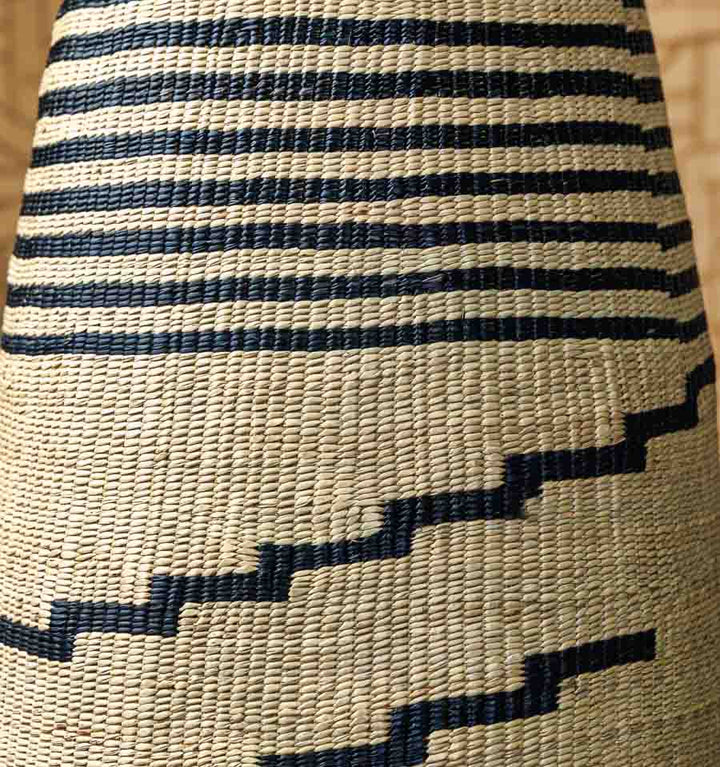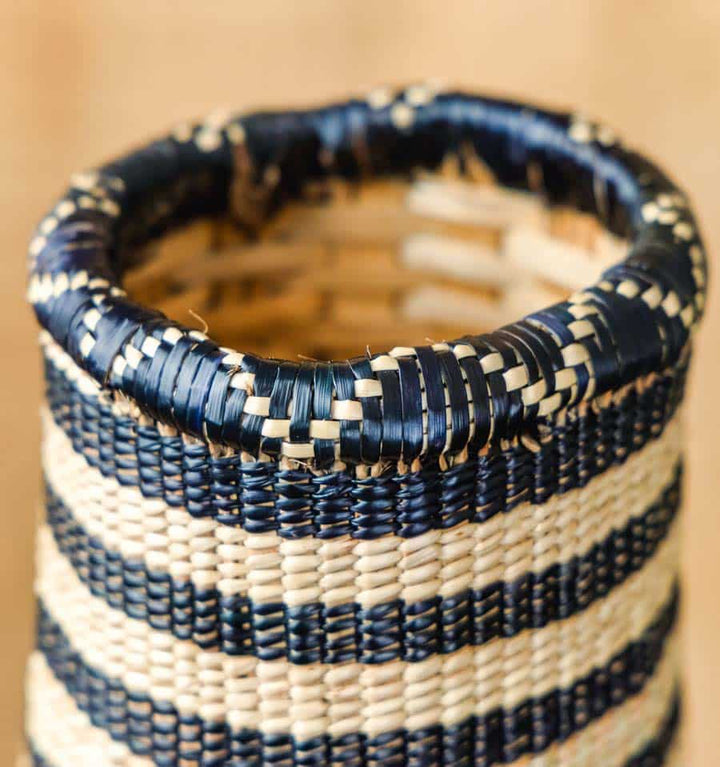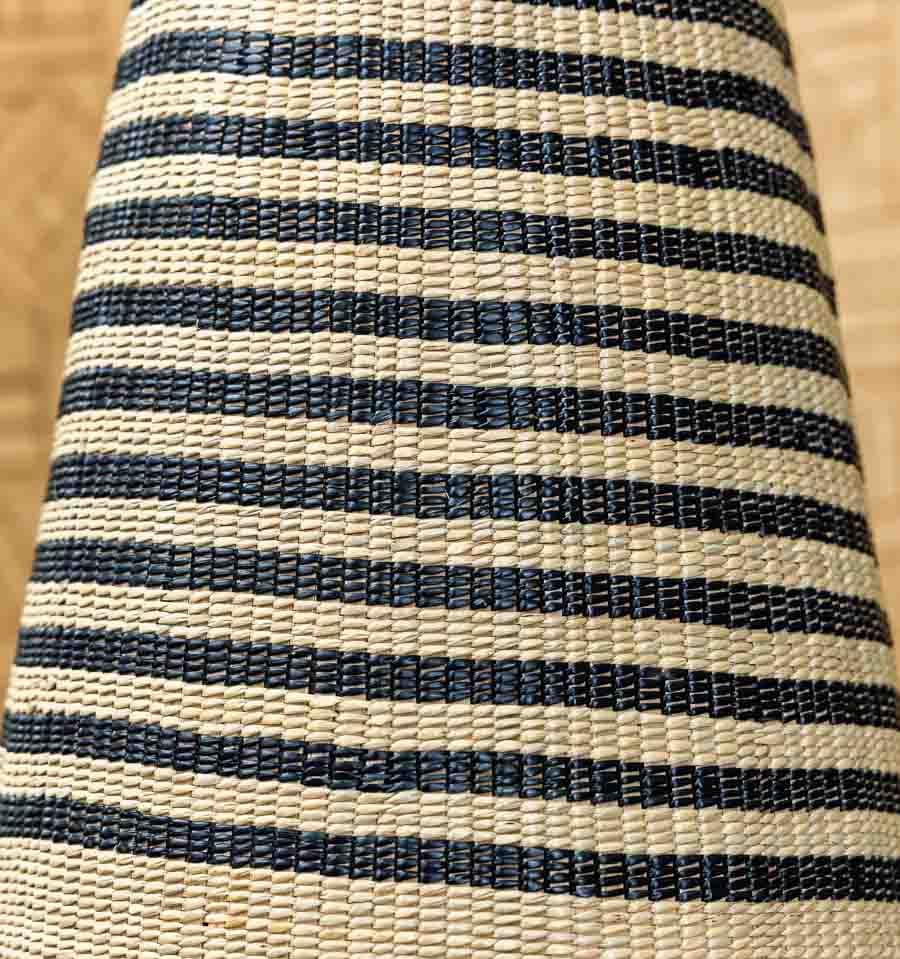The Story
Tall Rwandan baskets—known locally as Agaseke—have long been symbols of peace, generosity, and womanhood. Traditionally given as gifts during weddings, births, and community celebrations, they represent care passed from hand to hand. To give a basket is to share abundance. To receive one is to be honored.
Each piece is woven by women artisans in rural Rwandan cooperatives, using locally gathered sweetgrass and hand-dyed sisal. The form is tall and sculptural, with a tight lid and narrow base—a shape rooted in centuries of tradition. The designs often reflect balance, unity, and protection, rendered in bold yet minimalist geometry.
The Making
In Rwanda, weaving became more than craft — it became survival, healing, and unity. After the 1994 genocide, thousands of widows and orphaned girls turned to basketry as a way forward. Sisters Joy Ndunguste and Janet Nkubana built Gahaya Links to transform this ancient tradition into a path for prosperity. What began as a way to support families grew into a nationwide network of more than 4,000 women across 50 cooperatives, each keeping alive a skill passed down through generations.
Every Gahaya basket is coiled by hand from sisal, raffia, and wild sweetgrass, softened and dyed with natural pigments before being shaped into striking forms. Bold geometric patterns and vivid color combinations set them apart, while whimsical tall-necked vessels with tapering tops reveal an almost sculptural, human presence. For the women who weave them, these baskets represent stability and hope. For collectors, they are living works of art — vessels of resilience and timeless design.
Each piece is handwoven over many months using natural fibers and plant-based dyes. To protect its color and structure, we recommend displaying your woven art away from direct sunlight or skylights, as UV exposure can fade dyes and weaken fibers over time.
In very dry climates, you may occasionally mist the inside lightly with distilled or non-chlorinated water—similar to caring for wicker or rattan. Gently blot away any excess with a paper towel to help maintain the fiber’s natural balance.




